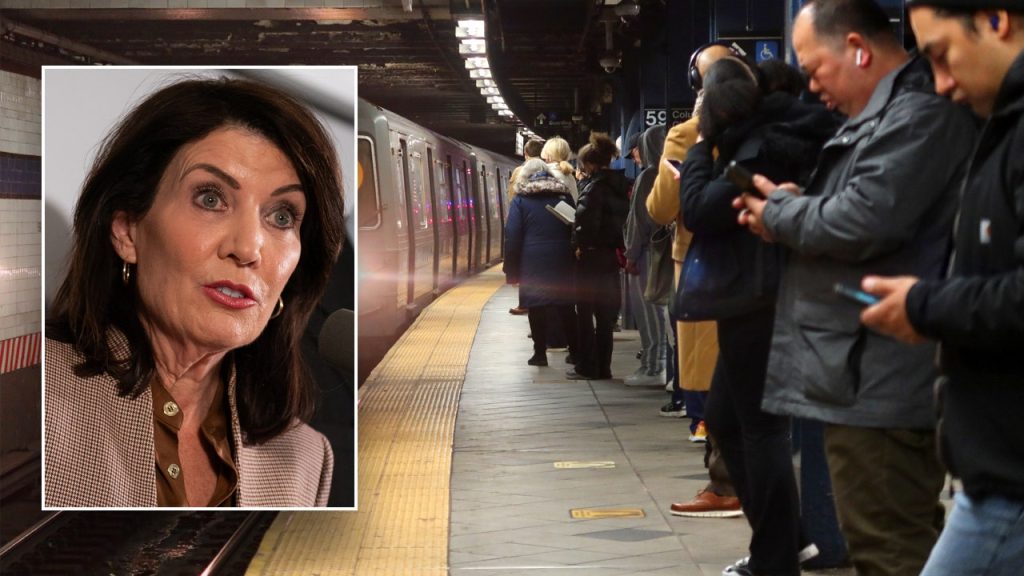Governor Kathy Hochul’s announcement of completed security camera installations in every New York City subway car follows a recent surge in violent crime within the transit system. This surge, marked by incidents such as a homeless woman being tragically burned alive and a man being pushed in front of an oncoming train, has intensified public safety concerns and fueled calls for action. Hochul, emphasizing public safety as her top priority, has linked the rise in violence to the broader issue of untreated mental illness among individuals experiencing homelessness. She argues that decades of underinvestment in mental health care and supportive housing have directly contributed to the precarious situation on the streets and subways.
The Governor’s response includes the deployment of 1,000 National Guard members to patrol the subway system and the completion of the subway car camera installation project, which she believes will aid law enforcement in swiftly solving crimes. Hochul’s proposed legislation aims to reform New York’s laws governing involuntary commitment for individuals deemed dangerously mentally unstable. This proposed change seeks to broaden the criteria under which a court can mandate assisted outpatient treatment, addressing what Hochul sees as a critical gap in the current system. She contends that existing laws are insufficient to address the scope of the problem, necessitating an expansion of the definition of individuals who qualify for compulsory treatment.
Despite these measures, Hochul faces criticism for what some perceive as insufficient action and a lack of concrete results. Critics like Curtis Sliwa, founder of the Guardian Angels, argue that Hochul needs to exert more pressure on state legislators who oppose her proposals, particularly regarding involuntary commitment. Sliwa advocates for a more assertive stance from the Governor, suggesting she leverage her influence by withholding support for other legislative initiatives until her subway safety measures are prioritized. He also blames the MTA’s lax approach to fare evasion for contributing to the problem, arguing that regaining control over who accesses the subway system is fundamental to improving safety.
Furthermore, Sliwa contends that the current initiatives, without addressing the issue of fare evasion, will be ineffective and amount to wasteful spending. His perspective highlights a fundamental disagreement about the root causes of the subway crime surge and the most effective solutions. While Hochul focuses on mental health and security measures, Sliwa emphasizes the need to regain control over access to the subway system as a primary deterrent. This difference in approach underscores the complexity of the issue and the range of perspectives on how best to address it.
Republican New York Council member Joe Borelli echoes some of the criticism directed at Hochul, but attributes the rise in subway violence to broader “soft-on-crime” policies enacted by Democrats. He specifically points to bail reform and “raise the age” laws implemented in 2019 as contributing factors to the increased criminal activity. This critique represents a broader political debate about the effectiveness of criminal justice reforms and their impact on public safety. Borelli’s argument highlights a fundamental difference in political philosophy, with Democrats generally favoring rehabilitation and alternatives to incarceration, while Republicans often advocate for stricter penalties and enforcement.
The debate surrounding subway safety in New York City involves multiple layers of complexity. While Hochul emphasizes mental health treatment and improved security measures, critics like Sliwa and Borelli point to different factors, such as fare evasion and broader criminal justice policies. This multifaceted nature of the issue demands a comprehensive approach that addresses both immediate safety concerns and the underlying social and economic factors that contribute to crime and homelessness. The ongoing dialogue between different stakeholders highlights the urgency of finding effective solutions to ensure the safety and well-being of both subway riders and the vulnerable populations who often find themselves within the transit system. Finding a path forward requires a nuanced understanding of these interconnected issues and a willingness to consider diverse perspectives.

